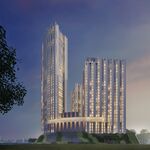Rainforest
Senior Member
It could be possibly for riders from North/South routes like 25/925 Don Mills, 24/924 Victoria Park and 68/968 Warden to transfer to Eglinton instead of Line 2 to get a seat if usage is lower. However being squash like sardines on Line 1 for a longer period of time might reduce at. This all depends on how post pandemic plays out as recovery seems to be a long term now. It's like the 96-03 recovery era again.
With the OL in place, 25/925 Don Mills shouldn't be a problem, they will mostly feed into the OL. I think the whole eastern section will be fine capacity-wise, because it is intercepted by the downtown-bound routes at 3 points. Yonge, then the OL at Don Mills, and then both Line 2 and Stouffville GO at Kennedy. The total LRT boarding count will be high, but it will not translate into overloaded trains because the various groups of riders will not overlap. 50 people out, another 50 people in.
The western section may be of a greater concern. The predicted loads for the Etobicoke section are lower than in the east, but that prediction assumes business-as-usual for the Martin Grove, Kipling, Islington, Royal York bus riders. In reality, quite a few of those bus riders will decide that transferring to the LRT at Eglinton and then to Line 1 subway at Cedarvale (Eglinton West) station is a better deal than staying on the bus till Bloor and then transferring at St George. The extent of such a shift is hard to predict, maybe the loads will be fine as is. But adding more alternative transit options (frequent Brampton/Georgetown trains with fare integration, LRTs/BRTs on Kipling and Islington, a new north-western light metro line etc) would certainly help.





